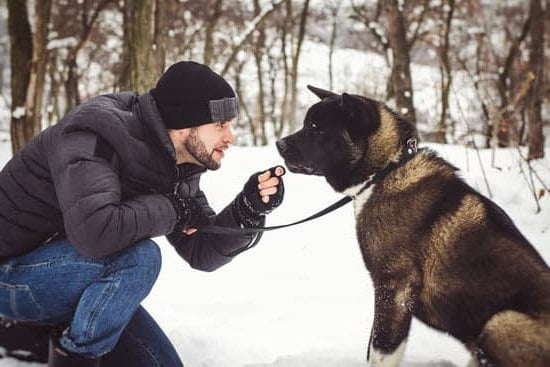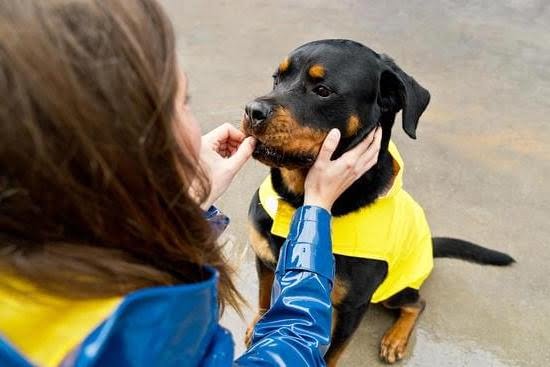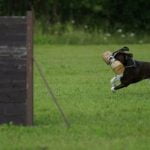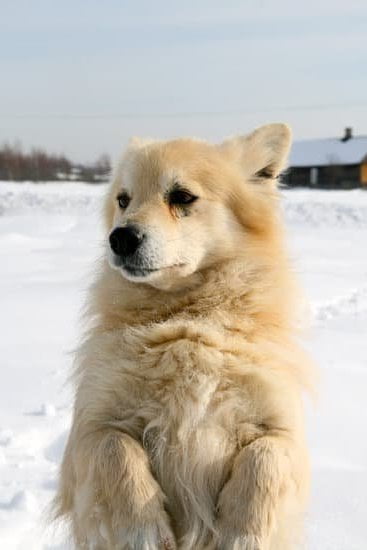Having a well-trained dog that can pick up items can be incredibly helpful in everyday life. Whether it’s retrieving the newspaper, bringing you your slippers, or picking up their toys, teaching your dog to pick up items not only strengthens the bond between you and your furry friend but also makes for a more obedient and helpful companion.
Before diving into the training process, it is important to understand the prerequisite skills needed for your dog to successfully pick up items. This includes basic commands such as “sit,” “stay,” and “drop it,” as well as a good grasp of the concept of fetching and retrieving.
In this article, we will discuss the step-by-step guide for teaching your dog to fetch and retrieve, while also addressing common challenges in training and how to troubleshoot them. Additionally, we will explore the use of positive reinforcement in reinforcing good behavior and practical applications of your dog’s new skill. So, let’s get started on how to train your dog to pick up items.
Understanding the Prerequisite Skills for Training
Before you begin training your dog to pick up items, it is important to assess whether your dog has developed the necessary prerequisite skills that will make the training process smoother and more successful. These skills include basic obedience commands such as “sit,” “stay,” and “come,” as well as understanding how to hold an object in their mouth without chewing on it.
If your dog has not yet mastered these skills, it is advisable to work on them first before starting the item pick-up training.
Basic Obedience Commands
One of the most important prerequisite skills for training your dog to pick up items is having a solid foundation in basic obedience commands. These commands establish communication between you and your dog, making it easier for them to understand what is expected of them during the training process. Commands such as “sit,” “stay,” and “come” are essential for setting the groundwork for more complex tasks like picking up items.
Holding Objects Without Chewing
Another crucial skill for item pick-up training is teaching your dog how to hold objects without chewing on them. This can be achieved through practicing with toys or soft objects that they can easily grip in their mouth. It is important to reinforce this behavior positively by rewarding your dog when they hold an object gently without damaging it.
By ensuring that your dog has these prerequisite skills in place, you will be setting them up for success in learning how to pick up items. With patience and consistent training, you can help your furry companion develop a valuable skill that can be both practical and fun for both of you.
Choosing the Right Training Tools and Treats
When training your dog to pick up items, it is important to choose the right tools and treats to ensure successful and effective training. The first step is to select the appropriate training tools, such as a comfortable leash and a suitable harness or collar for your dog. These tools will provide you with control over your dog’s movements during training sessions.
In addition to selecting the right tools, it is crucial to choose the appropriate treats that will motivate your dog to learn and perform the desired behavior. High-value treats, such as small pieces of cooked chicken or cheese, are often recommended for training sessions as they are both enticing and rewarding for dogs. It is also important to consider any dietary restrictions or allergies that your dog may have when choosing treats for training.
Another key aspect of choosing the right training tools and treats is understanding your dog’s preferences and adjusting accordingly. Some dogs may be more motivated by toys or playtime rather than food rewards, so it is essential to observe what motivates your dog the most during training sessions.
| Training Tools | Treats |
|---|---|
| Comfortable leash | High-value treats (cooked chicken, cheese) |
| Suitable harness or collar | Consider dietary restrictions/allergies |
Understanding how to train your dog to pick up items involves careful consideration of the tools and treats used in training sessions. By selecting the right training tools and motivating treats, you can create an environment that encourages learning and cooperation from your furry companion. All these aspects should be taken into account in order to ensure that your dog responds positively during the training process.
Step-by-Step Guide on Teaching Your Dog to Fetch and Retrieve
Understanding the Basics
Before you start training your dog to pick up items, it’s important to understand the basic skills that are necessary for this task. Your dog should already be familiar with commands such as “sit,” “stay,” and “drop it.” If your dog hasn’t mastered these commands yet, it’s best to work on those first before moving on to teaching them to fetch and retrieve items.
Introduction to Fetch and Retrieve Training
The key to successful training is patience and consistency. Start by associating a specific toy or object with the command “fetch” or “retrieve”. This could be a ball, a rope, or any other item that your dog can easily pick up. Begin in an enclosed area with minimal distractions so that your dog can focus on the task at hand.
Positive Reinforcement and Reward
When your dog picks up the designated item, make sure to praise them enthusiastically and offer a tasty treat as a reward. It’s important for your dog to associate the action of picking up an item with positive reinforcement. Gradually increase the distance between you and the item, gradually introducing new environments and levels of distraction. With time, patience, and consistent practice, your dog will become proficient in picking up items on command.
Troubleshooting Common Challenges in Training
Training your dog to pick up items can be a rewarding experience, but it also comes with its fair share of challenges. One common challenge is when the dog shows disinterest or reluctance to pick up certain items. This could be due to fear, lack of understanding, or simply not finding the item appealing. In such cases, it’s important to go back a few steps and re-introduce the item gradually, using positive reinforcement to create a positive association.
Another challenge that many dog owners face is their dogs picking up the item but refusing to bring it back. This is a common issue with retrieving training, and it can be addressed through consistent practice and patience. Teaching a reliable “drop it” or “release” command can help ensure that your dog will willingly let go of the item once they retrieve it.
Additionally, some dogs may exhibit possessive behavior over items they have picked up, leading to growling or guarding behavior. This can be resolved by teaching your dog the “leave it” command and gradually desensitizing them to sharing their retrieved items with you.
| Common Challenges | Troubleshooting Tips |
|---|---|
| Disinterest in picking up items | Use positive reinforcement and gradual reintroduction of the item |
| Refusal to bring back retrieved items | Teach a reliable “drop it” or “release” command through consistent practice |
| Possessive behavior over retrieved items | Teach the “leave it” command and desensitize them to sharing their items |
Overall, troubleshooting these common challenges in training involves understanding your dog’s individual needs and tendencies, being patient throughout the process, and consistently using positive reinforcement techniques. With time and dedication, you’ll find that your dog will become more reliable in picking up items as part of their training regimen.
Reinforcing Good Behavior Through Positive Reinforcement
When it comes to training your dog to pick up items, positive reinforcement is a crucial element in the process. Positive reinforcement involves rewarding your dog for exhibiting the desired behavior, in this case, picking up items. This method of training helps create a strong association between the action and a positive outcome, making it more likely for your dog to repeat the behavior in the future.
Here are some practical ways to reinforce good behavior through positive reinforcement when training your dog to pick up items:
- Use treats: Choose high-value treats that your dog loves and only give them as a reward for successfully picking up an item. This will motivate your dog to continue with the behavior.
- Verbal praise: In addition to treats, use verbal praise such as “good boy” or “good girl” when your dog successfully retrieves an item. Dogs respond positively to hearing praise from their owners.
- Physical affection: Many dogs respond well to physical affection, such as petting or gentle scratches behind the ears. Use this type of positive reinforcement when your dog successfully picks up an item.
Consistency is key when using positive reinforcement in training. Make sure to reward your dog every time they properly pick up an item, gradually reducing the frequency of rewards as they become more proficient in the behavior. It’s important to remember that positive reinforcement should always be used in conjunction with clear communication and patience during training sessions.
Ultimately, reinforcing good behavior through positive reinforcement not only helps train your dog to pick up items but also strengthens the bond between you and your furry companion. By consistently rewarding and praising your dog for their efforts, you’ll motivate them to continue learning and improving their skills.
Practical Applications of Your Dog’s New Skill
Once your dog has mastered the skill of picking up items, you can start applying this to various practical situations. Here are some ways you can put your dog’s new skill to good use:
- Assistance with household chores: Your dog can help bring you the newspaper, fetch your slippers, or even pick up their own toys and put them away.
- Outdoor activities: If you enjoy outdoor activities such as hiking or camping, training your dog to pick up sticks and other items can be helpful in keeping the campsite clean and tidy.
- Fetching specific objects: You can train your dog to pick up specific items such as keys, a remote control, or even their leash when it’s time for a walk.
Incorporating these practical applications into your dog’s training will not only provide mental stimulation and physical activity but also strengthen the bond between you and your furry companion.
Using positive reinforcement throughout these practical applications will also help reinforce the behavior of picking up items. Remember to always reward your dog with treats, praise, or play whenever they successfully complete a task. Consistency is key in maintaining and generalizing this skill across different situations and environments. With patience and practice, you’ll soon find that your dog is an indispensable helper around the house.
Maintaining and Generalizing Your Dog’s Ability to Pick Up Items
Once your dog has mastered the skill of picking up items, it’s important to maintain and generalize this ability to ensure long-term success. To maintain your dog’s ability, it’s crucial to regularly practice and reinforce the behavior. Consistency is key in ensuring that your dog continues to pick up items on command.
One way to maintain your dog’s ability is by incorporating regular training sessions into your daily routine. By consistently practicing the “pick up” command, you can reinforce the behavior and prevent any regression. Additionally, using positive reinforcement such as treats and praise will help motivate your dog to continue picking up items.
Another important aspect of maintaining your dog’s ability is generalizing the behavior across different environments and situations. Dogs often struggle with applying learned behaviors in new settings, so it’s essential to expose your dog to various environments and objects for them to practice picking up items. This will help solidify their understanding of the command and ensure that they can perform the skill in any situation.
To further strengthen your dog’s ability, you can gradually increase the difficulty of the items they are asked to pick up. Start with lightweight and easily accessible objects before progressing to heavier or more challenging items. By gradually increasing the difficulty, you can build upon your dog’s skills and ensure that they are capable of picking up a wide range of objects.
By consistently practicing, generalizing the behavior, and gradually increasing difficulty, you can maintain and generalize your dog’s ability to pick up items effectively. This will not only showcase their impressive skills but also demonstrate the value of dedicated training and positive reinforcement in shaping desirable behaviors in dogs.
Conclusion and Tips for Continued Success in Training Your Dog
In conclusion, training your dog to pick up items can be a rewarding and beneficial endeavor for both you and your furry companion. By teaching your dog this useful skill, you are not only encouraging mental stimulation but also promoting good behavior and providing valuable assistance around the house or outdoors. Whether it’s picking up toys, retrieving keys, or bringing in the newspaper, having a dog that can pick up items adds convenience and fun to everyday life.
To ensure success in training your dog to pick up items, it is important to be patient, consistent, and positive throughout the process. Remember that each dog learns at their own pace, so it’s crucial to celebrate small victories and progress. Use the prerequisite skills as a foundation for training, select appropriate tools and treats, and follow a step-by-step guide to effectively teach your dog how to fetch and retrieve.
Furthermore, reinforcing good behavior through positive reinforcement is key when training your dog. Praise and rewards go a long way in motivating dogs to continue performing desired actions. Additionally, it’s important to maintain and generalize your dog’s ability to pick up items by practicing regularly in various environments and situations. With dedication and the right approach, you can successfully train your dog to pick up items in no time.
Frequently Asked Questions
How Do You Train a Dog to Retrieve Things?
Training a dog to retrieve things can be achieved through positive reinforcement and repetition. Start by teaching your dog to hold an object in their mouth, then gradually incorporate fetching it when thrown.
How Do You Train a Dog to Take Things?
To train a dog to take things, you can use a similar approach to retrieving. Begin by teaching the “take it” command and rewarding your dog for taking an item gently from your hand. Gradually increase the complexity of the items they can take.
How Do I Train My Dog to Like Being Picked Up?
Training your dog to enjoy being picked up requires patience and positive associations. Start by gently lifting them while offering treats or praise. Gradually increase the duration and height of being lifted, always reinforcing with positivity and rewards.

Welcome to the blog! I am a professional dog trainer and have been working with dogs for many years. In this blog, I will be discussing various topics related to dog training, including tips, tricks, and advice. I hope you find this information helpful and informative. Thanks for reading!





